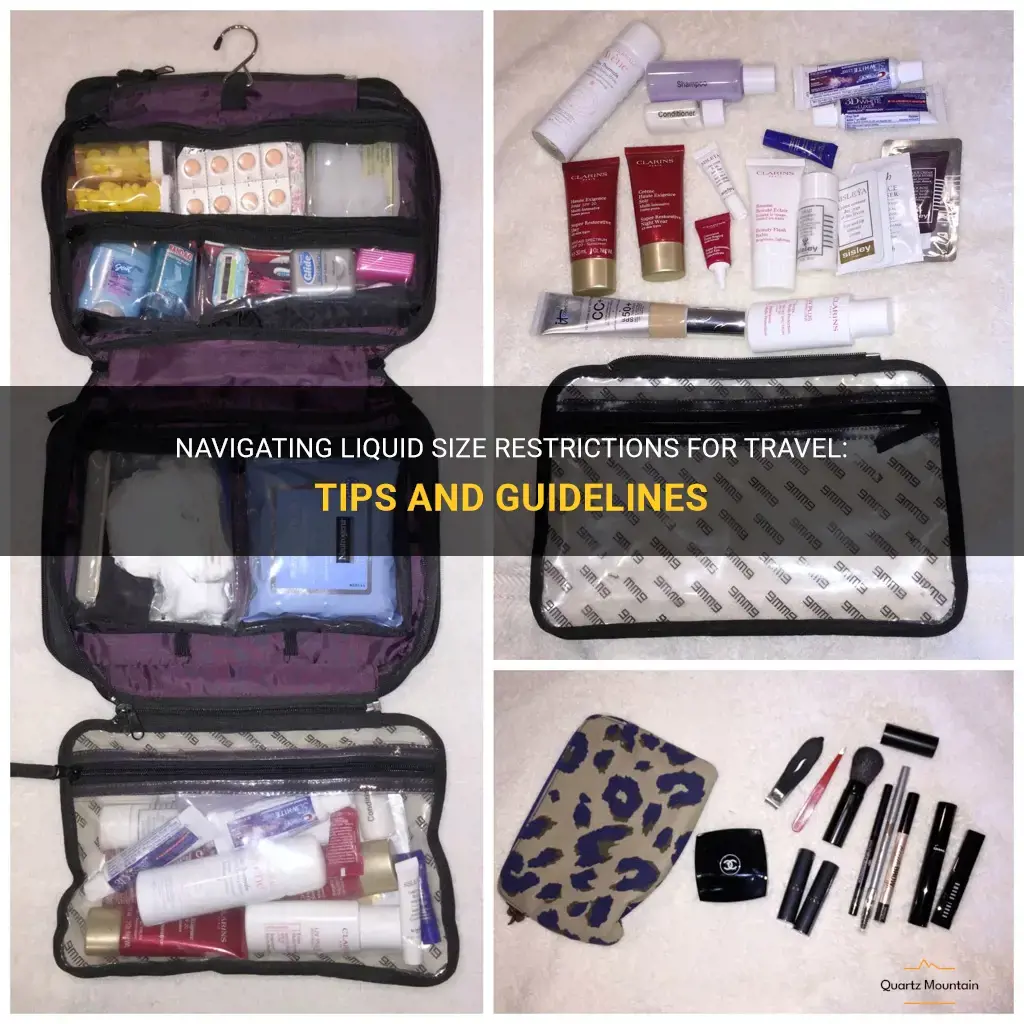
Are you planning a vacation or a business trip and concerned about the liquid size restriction for travel? Well, fret not, because in this article, we will explore everything you need to know about liquid restrictions and how you can navigate through them effortlessly. From understanding the rules to packing strategies, we've got you covered. So, sit back, relax, and prepare for a stress-free travel experience!
| Characteristics | Values |
|---|---|
| Restriction | 3-1-1 |
| Container size | 3.4 ounces (100 milliliters) |
| Container type | Clear, resealable plastic bag |
| Bag size | 1 quart (1 liter) |
| Exceptions | Medications, baby food, etc. |
What You'll Learn
- What is the maximum liquid size restriction for travel in most countries?
- Can I bring larger quantities of liquids in my checked baggage instead of my carry-on?
- Are there any exceptions to the liquid size restriction for travel, such as medical supplies or baby formula?
- How should I pack my liquids to comply with the size restriction for travel?
- What are the consequences if I exceed the liquid size restriction for travel at airport security?

What is the maximum liquid size restriction for travel in most countries?
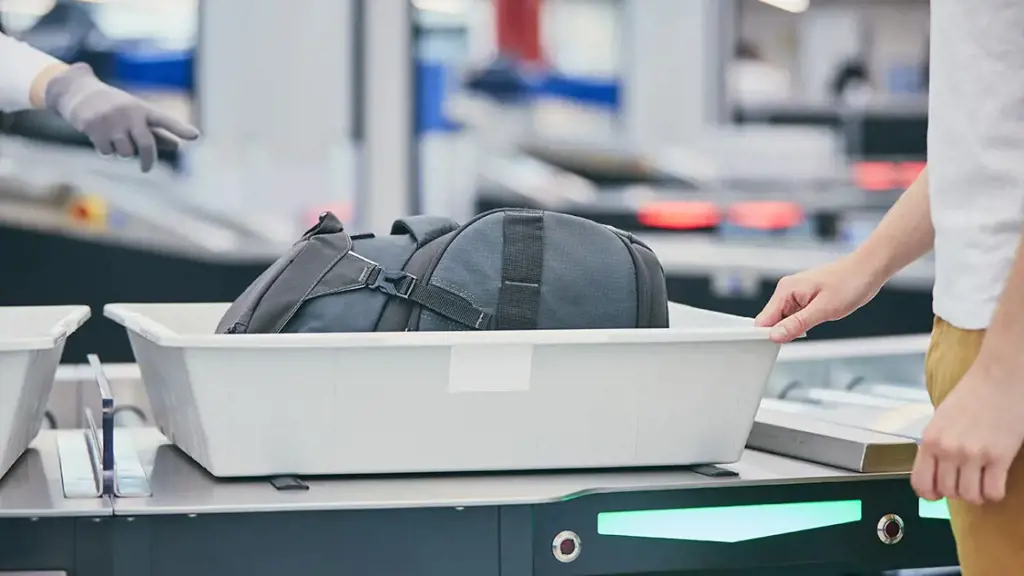
When it comes to traveling, it is important to be aware of the restrictions in place to ensure a smooth journey. One common restriction that travelers encounter is the limit on the size of liquids that can be carried in hand luggage. This restriction is put in place as a safety measure to prevent the smuggling of dangerous substances on board an aircraft.
In most countries, including the United States and many European countries, the maximum liquid size restriction for travel is 3.4 ounces or 100 milliliters per container. This is known as the 3-1-1 rule, which means that each passenger is allowed to bring one quart-sized clear plastic bag containing containers of liquids, gels, and aerosols that are 3.4 ounces or smaller. This bag must be placed in a separate bin during the security screening process.
It is important to note that the 3-1-1 rule applies to all types of liquids, including water, shampoo, perfume, and even certain foods. There are, however, some exceptions to the rule. Medications, baby formula, and breast milk are allowed in larger quantities, but they may need to be screened separately at the security checkpoint.
It is also worth mentioning that some airports and airlines may have additional restrictions on the size of liquids. It is always a good idea to check with the specific airline or airport before you travel to ensure that you are in compliance with their rules.
If you need to bring larger quantities of liquids, such as for medical reasons, it is advisable to pack them in your checked luggage. Checked luggage usually has fewer restrictions when it comes to liquids, but it is still recommended to check with your airline for their specific rules and regulations.
In conclusion, the maximum liquid size restriction for travel in most countries is 3.4 ounces or 100 milliliters per container. This restriction is part of the 3-1-1 rule, which allows passengers to bring one quart-sized clear plastic bag containing containers of liquids, gels, and aerosols that are 3.4 ounces or smaller. It is important to check with your specific airline or airport for any additional restrictions or requirements. By following these guidelines, you can ensure a hassle-free travel experience.
Exploring the California-Oregon Travel Restrictions: What You Need to Know
You may want to see also

Can I bring larger quantities of liquids in my checked baggage instead of my carry-on?
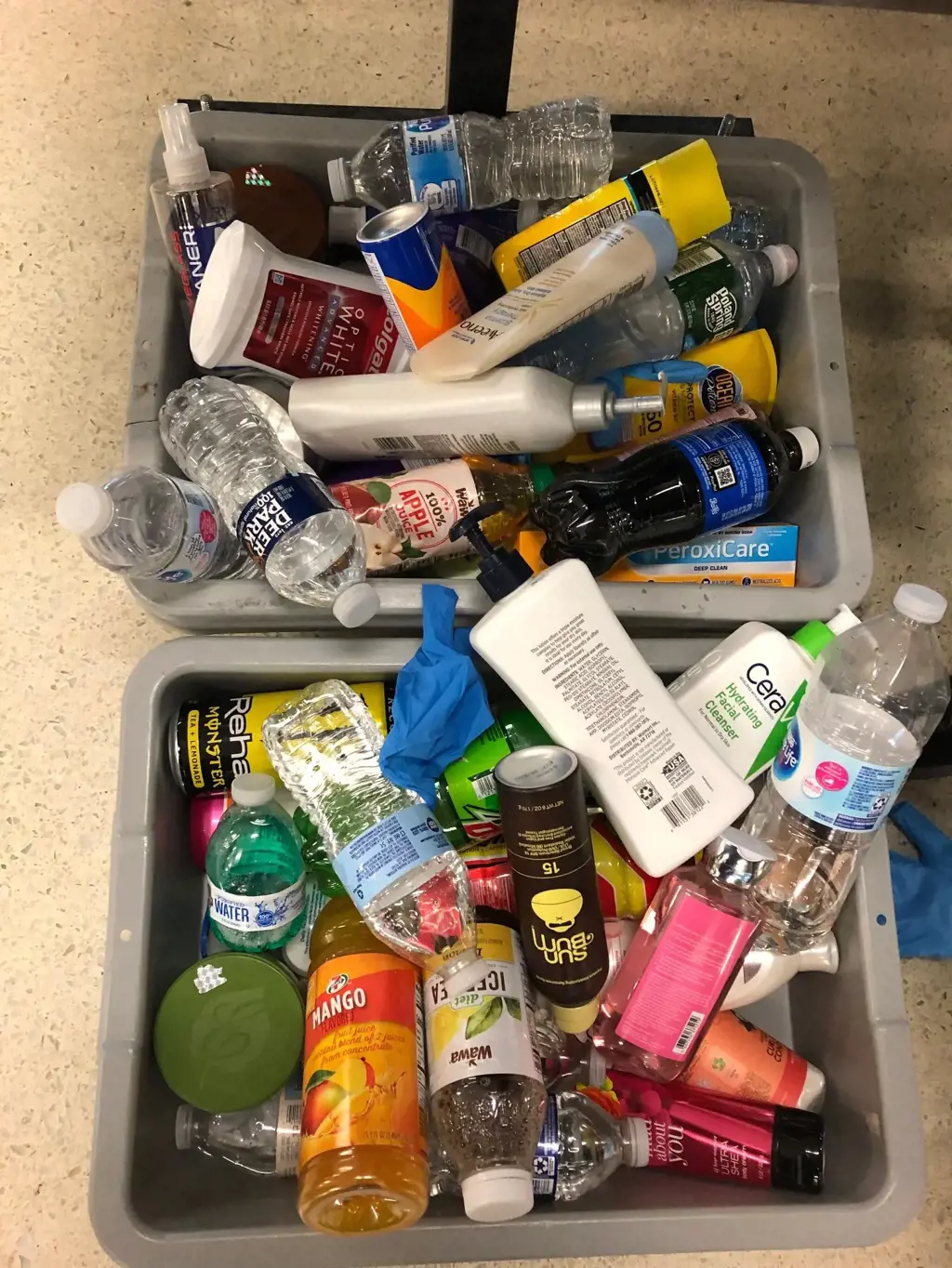
When it comes to traveling by air, there are certain restrictions and guidelines in place to ensure the safety of all passengers. One of these restrictions pertains to the amount of liquids that can be brought on board an aircraft. Passengers are familiar with the 3-1-1 rule, which allows them to carry on small quantities of liquids, gels, and aerosols in containers of 3.4 ounces (100 milliliters) or less, with all containers fitting into a one-quart-sized clear plastic zip-top bag.
However, many passengers wonder if they can bring larger quantities of liquids in their checked baggage instead of their carry-on. The answer to this question is, yes, larger quantities of liquids can be brought in checked baggage, but there are still certain regulations that must be followed.
Firstly, it's important to note that while larger quantities of liquids may be allowed in checked baggage, they must still comply with the airline's regulations. Each airline may have specific rules regarding the size and weight of checked baggage, so it's crucial to check with the airline before packing any liquids.
Additionally, even though larger quantities of liquids may be allowed in checked baggage, it's essential to properly secure these liquids to prevent any leaks or spills. It is recommended to place all liquid containers in a sealed plastic bag to prevent any leakage onto other items in the checked baggage. This will also make it easier for airport security to inspect the liquids if necessary.
Furthermore, it's worth mentioning that some liquids may not be allowed in either carry-on or checked baggage due to safety concerns. These items include flammable liquids, corrosive substances, and certain chemicals. It's crucial to familiarize oneself with the Transportation Security Administration (TSA) guidelines and regulations to be aware of any prohibited items.
In summary, while larger quantities of liquids can be brought in checked baggage, it's important to ensure that the liquids comply with the airline's regulations and are properly secured to prevent any leaks or spills. It's also vital to be aware of the TSA guidelines to avoid packing any prohibited items. By following these guidelines, passengers can travel safely and smoothly while bringing the necessary liquids with them.
UK Travel Restrictions Ease on June 21: What You Need to Know
You may want to see also

Are there any exceptions to the liquid size restriction for travel, such as medical supplies or baby formula?
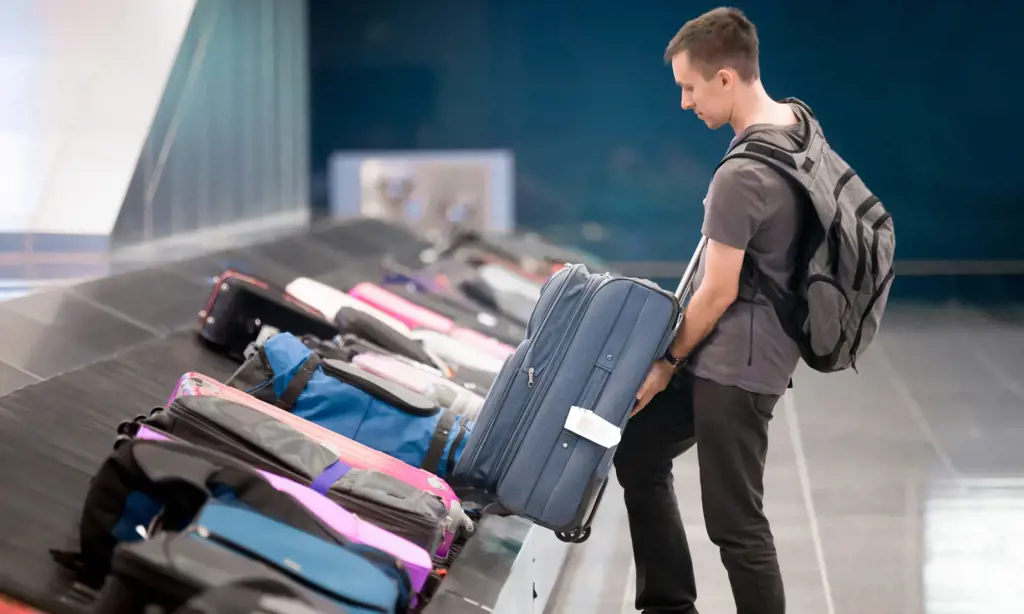
Traveling with liquids can be a bit tricky, as there are strict restrictions in place for the amount of liquid you can bring on board a plane. The general rule is that liquids must be in containers that hold 3.4 ounces (100 milliliters) or less, and all containers must fit in a clear, one-quart-sized plastic bag. This rule applies to both carry-on and checked luggage.
While these restrictions are meant to ensure the safety of all passengers, there are a few exceptions when it comes to medical supplies and baby formula. The Transportation Security Administration (TSA) recognizes that certain items are necessary for travelers, particularly those with medical conditions or those traveling with young children.
If you have prescription medications, you are allowed to bring them in larger quantities than the 3.4-ounce limit. However, you will need to declare them to the TSA officer at the security checkpoint. It is recommended to bring a copy of your prescription or a doctor's note to confirm the need for the medication. It's also a good idea to keep medications in their original packaging, as it can help verify their authenticity.
For travelers with special dietary needs or medical conditions, such as diabetes, you are allowed to bring larger quantities of liquids, such as juice or insulin, onboard. Again, you will need to inform the TSA officer at the security checkpoint and provide any necessary documentation. It's always a good idea to check with the airline or TSA ahead of time to understand what documentation is required and to ensure a smooth screening process.
When it comes to traveling with baby formula, there are also exceptions to the liquid size restriction. You are allowed to bring more than 3.4 ounces of formula for your baby or toddler. The formula does not need to fit in the quart-sized plastic bag, but it will need to be screened separately from the rest of your carry-on items. TSA officers may ask to perform additional screening, such as opening the containers and testing the formula. It's recommended to have your formula easily accessible, so it can be presented for inspection without causing delays.
If your child requires additional liquids during the flight, such as water or juice, you may also bring those in larger quantities. However, it's important to note that the liquid must be for the child's immediate consumption and not for general use. You may be asked to taste the liquid to confirm its contents.
It's worth mentioning that the rules and regulations regarding liquids can vary depending on the country you are traveling to or from. It's always a good idea to check the specific guidelines of the airports you will be passing through to ensure you are in compliance with their regulations.
In conclusion, there are exceptions to the liquid size restriction when it comes to medical supplies and baby formula. However, it's important to be prepared and have the necessary documentation or proof available to present to the TSA officers. By following the guidelines and being aware of the exceptions, you can ensure a smooth and hassle-free travel experience with your necessary liquids.
Navigating JetBlue's Travel Restrictions: What You Need to Know
You may want to see also

How should I pack my liquids to comply with the size restriction for travel?
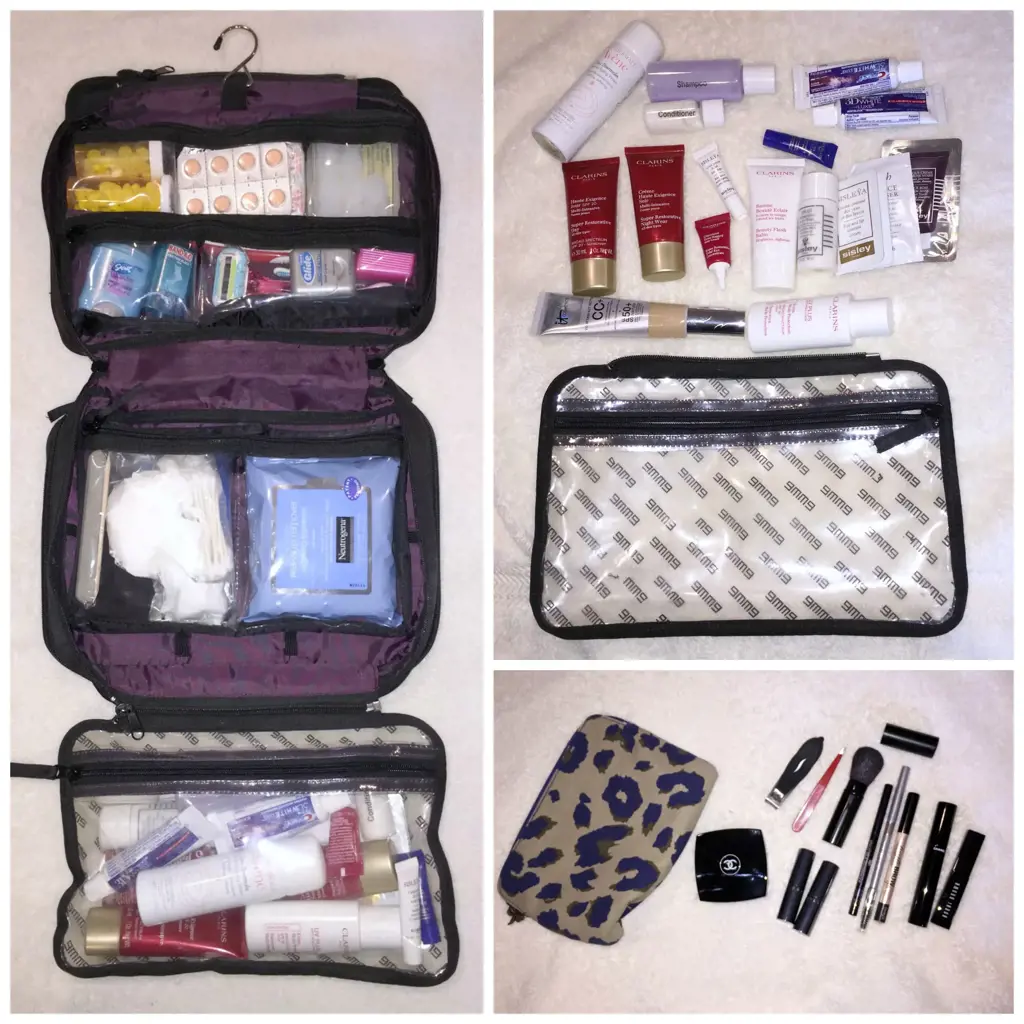
When it comes to traveling by air, there are several restrictions in place to ensure the safety of all passengers. One such restriction is the limitation on the size of liquids that can be carried in your carry-on baggage. To comply with these rules, there are a few packing tips you can follow.
Firstly, it's important to understand the specific requirements set by the airline you are traveling with. Most airlines follow the Transportation Security Administration's (TSA) rules, but there may be slight differences between airlines. Generally, the TSA allows passengers to carry liquids in containers that are 3.4 ounces (100 milliliters) or less. These containers must be placed in a clear, quart-sized plastic bag.
To comply with these rules, it's best to purchase travel-sized containers that meet the size restrictions. These can usually be found at most drugstores and are specifically designed to hold small amounts of liquids. Make sure the containers are labeled as 3.4 ounces or less, as this is the maximum allowed size. If you have larger bottles of liquids, such as shampoo or lotion, consider transferring a small amount into the travel-sized containers.
When packing your liquids, it's essential to place them in the clear, quart-sized plastic bag mentioned earlier. This bag must be completely transparent and sealable. It's a good idea to check the dimensions of the plastic bag required by the airline, as some may have specific size requirements. Additionally, each passenger is allowed only one plastic bag, so make sure all your liquid items fit comfortably inside.
To prevent any accidental spills, it's recommended to unscrew the caps of your containers and place a piece of plastic wrap over the opening before reclosing the lid tightly. This will help create a seal and reduce the risk of any leakage during the flight. It's also a good idea to pack the plastic bag containing your liquids in an easily accessible place within your carry-on luggage. This will make it convenient for security screening, as you will need to present the bag separately at the checkpoint.
Lastly, it's important to note that there are exemptions to the liquid restrictions for certain items such as medications, baby formula, and breast milk. These items may be allowed in quantities exceeding 3.4 ounces, but they will still need to be declared and presented separately during the security screening process. It's advisable to check with the airline or TSA for specific guidelines on these exemptions.
By following these packing tips and guidelines, you can ensure a smooth and hassle-free travel experience. Remember to always check the requirements of the airline you are flying with, as they may have specific regulations in place. With proper planning and organization, you can comply with the size restriction for liquids and enjoy your journey without any unnecessary delays or complications.
Understanding the Implications of DPS Travel Restrictions and How It Affects the Tourism Industry
You may want to see also

What are the consequences if I exceed the liquid size restriction for travel at airport security?
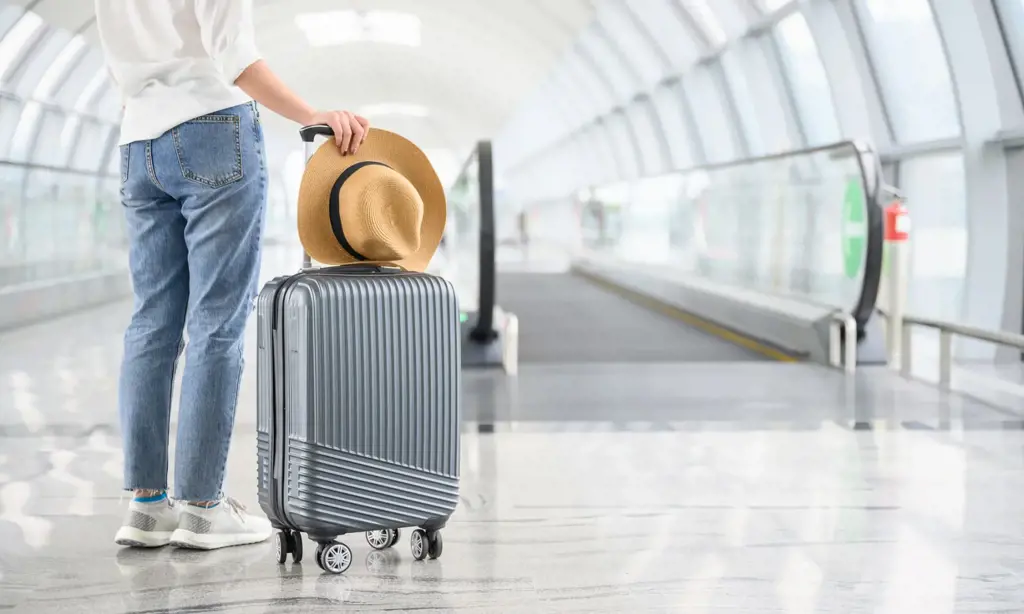
When it comes to air travel, security measures are of utmost importance. One such measure is the liquid size restriction for carry-on bags at airport security. These restrictions were put in place to ensure the safety of all passengers. But what happens if you accidentally exceed the liquid size restriction? Let's find out.
The liquid size restriction is fairly straightforward: you are allowed to carry liquids, gels, and aerosols in containers that are 3.4 ounces (100 milliliters) or less. These containers must be placed in a clear, quart-sized plastic bag. Each passenger is only allowed one bag, and it must be presented separately at the security checkpoint.
If you happen to exceed the liquid size restriction, there are several consequences you may face. Firstly, the security officer may ask you to remove the offending item from your carry-on bag. You will then have the option to either throw it away, check it in your baggage, or ask a friend or family member to hold the item for you.
If you choose to throw away the item, be prepared to say goodbye to it permanently. Airlines and airports are quite strict when it comes to security measures and will not allow you to retrieve any prohibited items once they have been discarded. This includes items that exceed the liquid size restriction.
Another consequence of exceeding the liquid size restriction is the possibility of additional screening. If the security officer suspects any prohibited items in your bag, they may ask to perform a more thorough search. This can be time-consuming and may delay your journey. In some cases, the additional screening may result in you being unable to bring the item on board the aircraft.
It's worth noting that the consequences for exceeding the liquid size restriction may vary depending on the country and airport you are traveling through. Some airports may be more lenient, while others might strictly enforce the rules. It's always a good idea to familiarize yourself with the specific regulations of the airport you will be flying from to avoid any surprises.
In conclusion, it's essential to abide by the liquid size restriction for carry-on bags at airport security. If you accidentally exceed the restriction, you may be asked to remove the item from your bag and dispose of it. Additionally, you may face additional screening or be unable to bring the item on board. It's always best to double-check the regulations of the airport you will be flying from to avoid any inconvenience or potential loss of belongings.
An In-Depth Guide to Inbound Philippines Travel Restrictions: What You Need to Know
You may want to see also
Frequently asked questions
The maximum liquid size allowed in carry-on baggage when flying is 3.4 ounces or 100 milliliters per container. This includes toiletries such as shampoo, conditioner, and lotion. All containers must be placed in a clear, quart-sized plastic bag with a zip-top closure.
Yes, you are allowed to bring larger liquid containers in your checked baggage when flying. There are no size restrictions for liquids in checked bags. However, it is important to note that if your liquid item exceeds 70 ounces or 2 liters, you must declare it to the airline during check-in.
Yes, there are a few exceptions to the liquid size restriction for travel. Baby formula, breast milk, and medications in liquid form are allowed in larger quantities than 3.4 ounces or 100 milliliters. These items do not need to be placed in a plastic bag, but they must be declared to the security officer at the checkpoint for inspection. It is recommended to carry a doctor's note or prescription for medications in liquid form to facilitate the screening process.







